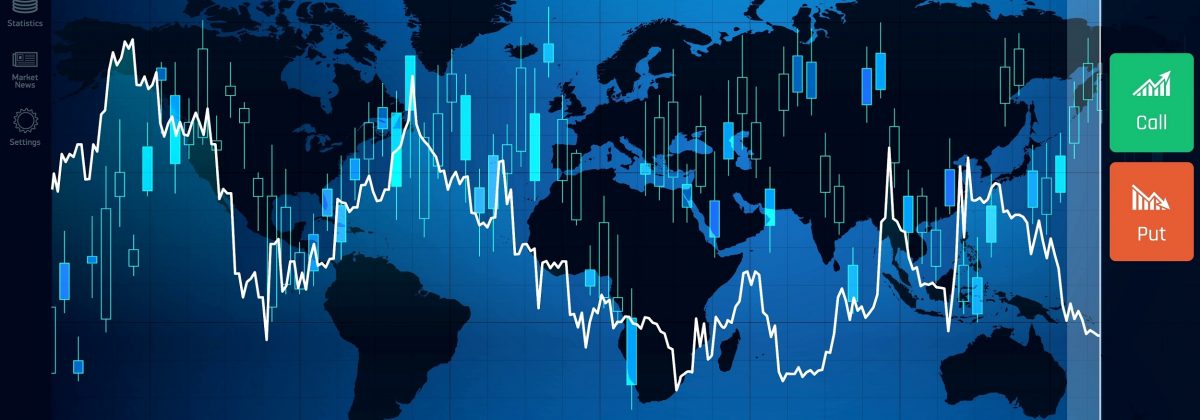Understanding the Difference between Binary Options and Forex Trading

Currency trading has existed since the ancient times. Today, the global forex market is one of the largest and most liquid markets in the world. Binary options, on the other hand, are the new kid on the block. Many say that binary options are new versions of forex trading, maybe even simpler, which makes it a preferred instrument for many new traders. At the same time, binary options are also associated with high risk and bad practices in the market.
Understanding the differences and similarities between these two modes of trading is crucial to making informed trading decisions. So, let’s take a look at what binary options are first.
What are Binary Options?
Binary options are a type of exotic option, derivatives that can have several triggers related to the calculation of pay-offs. Nevertheless, these are quite complex, compared to the regular vanilla options. The pay-off is either a fixed amount or nothing at all, hence binary. Two types of binary options exist – cash-or-nothing binary option and asset-or-nothing binary option.
In the former, a certain amount of cash is paid on expiry, which depends on the relative position of the current price of an underlying asset, in relation to the strike price of the options derivative. In the latter option, the value of the underlying security is paid off.
The price of binary options can be determined through the Black–Scholes model of valuation.
Until quite recently, binary options were primarily considered a form of gambling and have been associated with many fraudulent activities. Even today, countries within the European Union and Canada do not allow trading in these financial derivatives. In January 2018, the UK FCA gained control over the binary options market from the gambling commission. By December 2018, the FCA had banned the sale, marketing and distribution of binary options to retail clients. In the United States, binary options in exchange-traded formats are approved by the US SEC.
Before we move on to learning the differences between binary options and forex trading, let us look at the ways in which they are similar:
- Dependent on Asset Price Prediction: Both instruments work on the basis of predicting movement and direction of asset prices. Based on these predictions, traders assume buy and sell positions.
- Huge Profit Potential: If done right, both can offer good profit opportunities. Experts say that binary options work just like Roulette, if your prediction is right, you get back your money plus additional returns.
- Risk Involvement: When there is huge scope for profit, risks tend to be higher too. Traders can witness quick and big losses, just as they can earn quick and big gains.
- Trading: Both are tradable online and both can be started with small amounts of capital.
Differences between Forex Trading and Binary Options
1. Variability – Higher Variability Means More Risk
In the binary options market, investors only predict whether asset prices will go up or down in a certain period of time. There is no variability in terms of risk and profit potential.
On the other hand, in the forex markets, traders don’t just predict the direction of currency prices, but also the amount of rise and fall in value. This offers high variability in the risk-reward ratio. The ultimate level of risk and profit remain unknown. On the whole:
- If currency prices rise, it is a signal to buy. Profit potential will increase with a rise in price.
- If currency prices decline, it is a signal to sell. Profit potential will decrease with a fall in price.
2. Difference in Expiry Times
In binary options, timeframes and expiry can vary from 60 seconds to as long as 3 months. Each trader must select the timeline before entering a position. In short, there is a start and end time. The trade closes automatically at the end of the timeline.
Forex trading has no such timeline. Traders have the flexibility to open and close trades whenever they wish to. Positions can continue for months or even for years. This is advantageous, but could prove tricky under some conditions.
3. Concept of Margin or Leverage
Forex trading has an attractive yet risky tool, called margin. Traders can enter into positions much larger than the available capital at hand. They can make significant profits using this tool, and also suffer magnified losses when the markets go against them.
Margin or leverage is not available for binary options trading.
4. Trade Management Flexibility
Aside from the high/low options, most binary options are available at certain times in a day or week. The strike price is also set by the broker. In forex trading, one can enter limit orders at any price, or enter into market orders at any time of the day.
Some binary options also have rules regarding the stipulated time, before which you cannot close a trade. In the forex markets, you can close a trade anytime you want to, meaning you can exit positions to cut losses.
5. Transaction Costs
Binary options do not include transaction costs, unlike forex trading, where commissions, spreads and slippage are common terms. However, pay-out in binaries, may only be a percentage of your total.
6. Types of Instruments to Trade
Firstly, binary options are not restricted to currency pairs. They can include stocks, commodities and indices. There are mainly 5 kinds of binary options to trade:
- High/low
- Boundary options
- 60 seconds options
- Touch/no touch options
- Option builder
Forex trading consists of order types, like buy/sell, limit stop, trailing stop, hedge orders and more.
7. Volatility Risks
Binary options do not include unexpected volatility. In forex, sharp swings in price data can bring considerable differences in the bottom line. This makes the task of setting up appropriate risk management systems very important.
It is important to engage in proper research before trading binary options. Major countries regard them as “high-risk” and “unpredictable” financial instruments. Many binary options outlets have been termed as fraudulent by governing bodies across the world.




